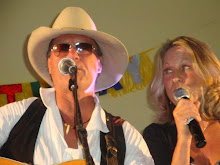
39 (D-92)Lake Powell is the second largest man-made lake in the United States and is without doubt the most scenic. It stretches 299 kilometers (186 miles) across the red rock desert from Page, Arizona to Hite, Utah. Utah has the lion's share of Powell's crystal clear water, but Arizona has the most important part—the dam. It took 17 years, from March 13, 1963 to June 22, 1980, to fill to the planned level of 1128 meters above sea level. Lake Powell contains 30 km³ of water when it is full. (The level has gone down since 2000 because of drought.) In 1972 Lake Powell and the surrounding countryside was incorporated into Glen Canyon National Recreation Area. There are 96 major canyons to explore but you'll need a boat for the majority of them because there are few roads. Other lake activities include swimming, fishing, scuba diving, snorkeling, water skiing, hiking and sightseeing.
The reservoir is named for explorer John Wesley Powell, a one-armed American Civil War veteran who explored the river in three wooden boats in 1869.
Jane
___________________________
VOCABULARY
-scenic = "qui offre de beaux paysages"
the lion's share = the biggest part
-level = "niveau"
-drought = "secheresse"; pronounced like the preposition "out"
-scuba diving = an underwater activity where you use diving cylinders (Br) diving tanks or scuba tanks (Am) to breathe
-snorkeling = to move or swim underwater using a snorkel which is a breathing tube extending above the surface of the water, used in swimming just below the surface
___________________________
What is the largest man-made lake in the United States and where is it?
What does "scuba" stand for? (Hint: "u"= underwater; "b" = breathing)
 59 (D-72) Bryce Canyon is a small national park (145 km2) in southwestern Utah. Named after the Mormon pioneer Ebenezer Bryce, Bryce Canyon became a national park in 1928.
59 (D-72) Bryce Canyon is a small national park (145 km2) in southwestern Utah. Named after the Mormon pioneer Ebenezer Bryce, Bryce Canyon became a national park in 1928.




.jpg)













